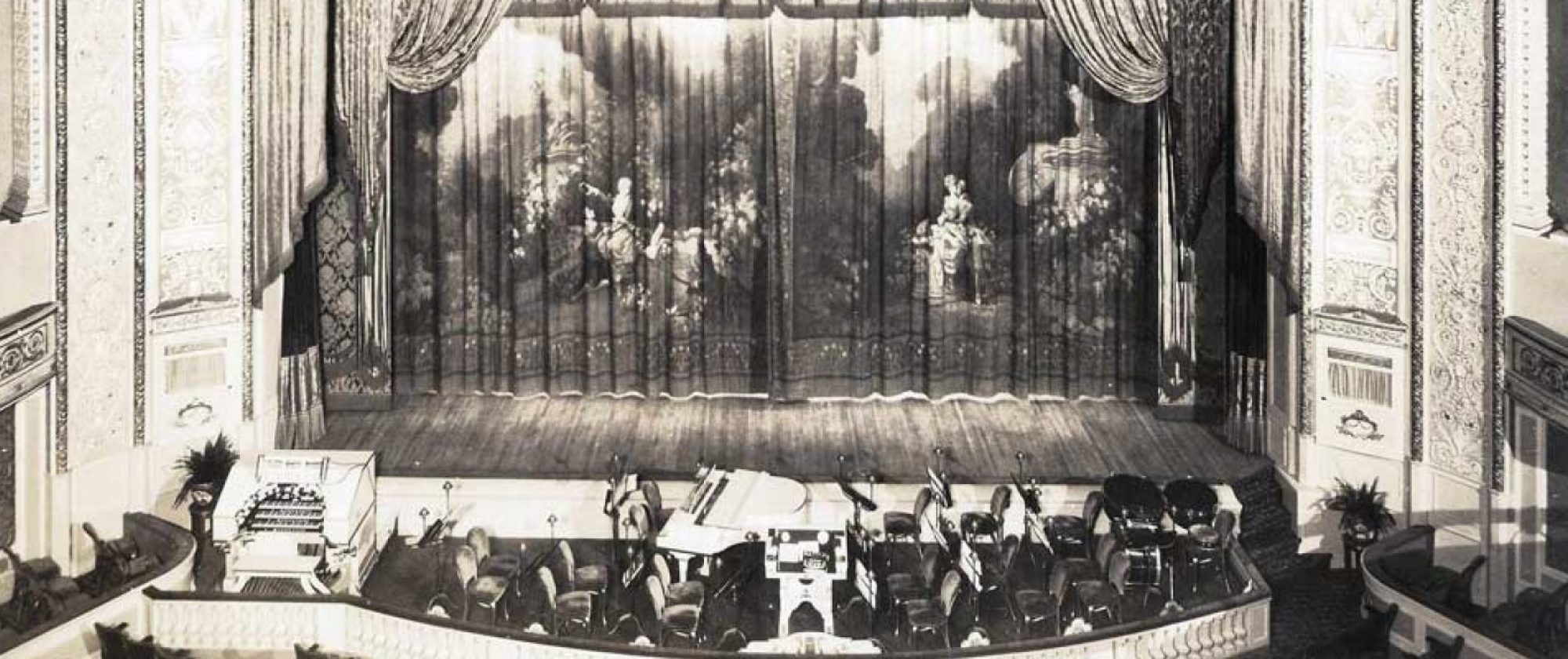[New act] Aerial and wire novelty; 9 mins; full. Here is an opening act that contains enough effort of a diversified nature to make it worthy of the bigger bills. It is presented by a man and woman in a novelty of black and white design. The man opens the turn with some juggling on the slack wire and then offers some balancing. Finishing on the wire the man and woman do some floor tumbling and end with a tractor roll. This in turn is followed with a bit of chair on the trapeze balancing and finally the man hanging from the bar handles the girl in mouth hold for a whirling finish.
[New act] Eccentric Sister Act; 14 mins; one. This act opens almost as a single with the straight of the two girls delivering a popular number in strident tones. Finally there is the interruption by the comedienne, with a make-up more or less Sis Hopkins in style. There is some talk that really amounts to nothing and then another song by the straight. In this she manages to get down to the foot lights and clinch with the drummer for a kiss. Then the comic has her inning without stirring anything. A double number for the close let the girls out without any applause to speak of. The act is just a rough turn that hasn’t sufficient class for the small time around New York.
Closing, the Black and White Revue did little until the toe dancer offered her solo stepping, which was the first offering of the night to rouse the audience contortionistic dance at the final curtain of the act by this same girl brought it all the applause that it got, and the act proved the hit of the show. Without this one girl, it wouldn’t have received anything from the audience.
Four Lamy Brothers opened with a fast casting turn. There are thrills galore provided by the routine, the final flying stunt pulling a chorus of startled “ohs” from the feminine contingent. One of the four works in comedy garb and was mildly amusing in a conventional acrobatic fashion.
George Yoeman and Murray and Volk provided the comedy punch of the middle portion of the show. Yoeman had a tough time getting started. He tried the house with everything, laughing himself when a number of his pet gags failed to connect. But the exploration was successful. The automat matter did get over, and so Yoeman specialized on it, the laughs coming easily then. Yoeman is keeping his talk freshened by little additions, and there are always a few more laughs. His mention of the Lenox avenue subway train as the “Black diamond Express” is really funny for anyone who has gone uptown on those trains. The “hoke” of the Murray and Volk act also found a true target and the men delivered a hit on fourth, following the Yoeman single.
In the next to closing spot Billy Hibbitt and Eddie Malle offered their chatter in Southern dialect. The turn suggests the old Aveling and Lloyd turn in patterned close to that routine, though the actual material appears to have been written to carefully evade using the Aveling and Lloyd matter. Hibbitt and Malle got over nicely.
Four of the eight acts were laugh-getting turns, the show ending with “Pedestrianism,” the George N. Brown act with Marian Ardell. Brown provided an extra laugh in asking for his “committee,” starting to say “three or four local people,” only he said it “yokels” the first time, and perhaps that wasn’t so much out of the way at that.
Ruth Roye had to make a speech after singing three numbers in her own rough and ready style, with much facial contortion and a discreet shimmy quiver. She is inclined to overwork some of her eccentricities of manner, but she does communicate a certain responsive good will in her audiences, perhaps by her very exuberance. At any rate she marked up an unqualified individual hit on a bill that is no small feat for a single woman next to closing at close to 11 o’clock.
Florence Walton stood in the electric outside, dividing with Miss Gunning. Her two fur wraps, one of real chinchilla and one of ermine fairly screamed of staggering overhead and her diamonds echoed the same thing, the cyclorama drop that furnished the background murmured modest thrift to the extreme of shabbiness. The fact that the offering so emphasized class made this unsightly detail distressingly insistent. Young Allan Faran is a refreshingly manly dancing partner, a relief from the anemic youth of that profession, and the violinist who covers two intervals for Miss Walton’s changes is an artist. However, Miss Walton’s assistants merely furnish a framework for her sartorial orgy Miss Walton herself is put in the shade by her possessions of clothes and baubles. Although she is the same slim, graceful dancer as before.
Harry and Anna Seymour picked up the show after the intermission and got the audience settled again and in an agreeable mood. Miss Seymour’s imitation of Nora Bayes is the weakest of her bits. The others are capital. So is her clowning and “nut” stuff, guaranteed to tie up any audience of the Riverside class. Harry’s dancing is the goods. As a sample of faultless specialty, it stands out like Caruso’s high C.
